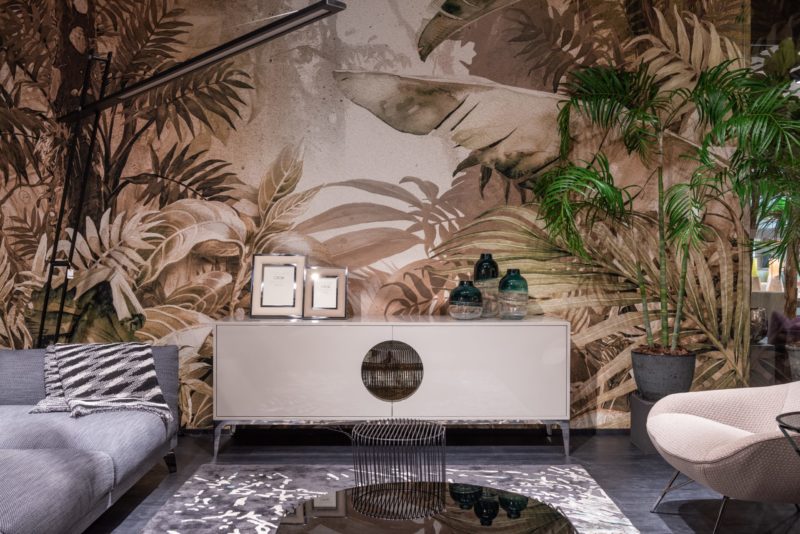A loveseat with legs is far more stable than a loveseat or cushion without legs. While the latter will move slightly during usage, loveseats with legs are more ‘rooted,’ and will remain fixed in whatever region they have been put. But, how thick should a loveseat leg be?
Loveseats have been a mainstay of furniture throughout history on a global scale, however certain civilizations did not use them until the last century. In other incarnations, loveseats were simply put on the floor to give padded comfort against harsh surfaces.

However, loveseats were eventually constructed with legs that allowed them to be lifted higher than the floor.
loveseats with legs allow users to stoop down less, making sitting less tiring, especially for persons with leg, hip, or back problems or the elderly.
What is a Loveseat?
A loveseat is one of two kinds of two-seat chairs. One kind, known as “British two-seaters,” is virtually equivalent to a “two-seat sofa.” It is usually equipped with two upholstered seats.
Another type, also known as a tête-à-tête, courting bench, kissing bench, gossip’s chair, or conversation bench, is any type of two-seat furniture in which the two seats are arranged in an S shape, allowing two people to converse while
As opposed to space-saving sitting, many individuals will utilize loveseats in their homes to add flair and a sense of opulence. Loveseats are frequently offered as part of living room sets that contain other components such as couches.
They’re ideal for snuggling with your sweetheart or reading a book.
We frequently overthink the overall dimensions of a loveseat, and we overlook one important detail: the legs. So, in this topic, we’ll look at how thick should a loveseat leg be?
The legs of a loveseat can vary in size. The thickness of a standard loveseat is from 2.5 to 3 inches. This is dependent on the sort of loveseat leg you have installed on your loveseat or any other piece of furniture.
How Tall Should the Legs of a Loveseat Be?
Your thighs should be supported by the loveseat. When seated, your knees should be bent at a 90-degree angle, and your feet should be flat on the floor.
The normal clearance between the user’s legs and the front edge of the seat for a person of average height is 21 inches to 22 inches.
Can I raise the legs on my loveseats?
If you have unwheeled loveseat legs, furniture risers are the most simple and least expensive alternative. They generally range in height from 2 to 5 inches and are used to increase the size of tables, sofas, seats, and beds.
Leg Types of Loveseats
Arrow Foot
An arrow foot has a circular foot that tapers towards the base and is separated from the furniture piece’s leg by a turned portion.
Block Foot
The block foot is a straight, undecorated foot that lends itself particularly well to contemporary loveseats. Modern block feet are shallower and thicker than conventional, higher block feet.
Foot Bracket
An upwardly curved mitered foot. The cabriole bracket (with a cabriole “knee”) and the ogee bracket (with a horizontal “S” curve addition) are two variations.
Bun Foot
A flattened spherical foot that was fashionable in the 17th century. The bun foot may be seen in country-style furniture, where its simplicity contrasts with classic, flowery fabrics, and overstuffed shapes.
Leg Cabriole
A leg with an outward-curving knee and an inward-curving foot, resulting in a double-curved “S”-shaped leg.
Foot with Claw and Ball
A classic foot design dating back to the 17th century that shows a bird claw holding a ball. It was popular in Chippendale style furniture and is still used now for a classic design.
Foot Club
This design, sometimes known as a pad foot, has an attractive outward-turned rounded end that resembles a golf club. Frequently used in conjunction with a cabriole leg.
Foot Paw
A classic furniture foot shaped like an animal’s paw. The paw foot is elaborate and regal, and it may be seen on ancient Egyptian furniture as well as Neo-classical reinventions.
The base of the Platform
A platform is a plinth that holds a loveseat. They are typically left unfinished or covered with a preferred accent material and recessed from the front of the sofa for distinctiveness.
Leg of the Saber
The original Greek klismos chair utilized a softly curved, spread taper leg, which was resurrected during the Neoclassical period. The antique leg is frequently utilized for back loveseat legs.
Leg Splayed
A circular leg that is more than 90 degrees outwardly angled from the loveseat base and is generally somewhat recessed from the front. Mid-century modern furniture is a popular style.
The square leg, a near relative of the conventional Marlborough leg, is shorter, unembellished, and straight on both sides—a slightly narrower, a taller variant of the block foot.
Block Foot with Tapered Toes
The tapered block foot, like the square leg, is a straight leg that is narrower at the bottom than it is at the top. Its beautiful simplicity makes it popular for contemporary couches.
Leg Turned
The ornamental rings of a turned leg are made by rapidly turning a wooden dowel on a lathe and shaping it using wood tools. Fewer undulations are more contemporary, but numerous undulations are traditional.
Conclusion
Let us now evaluate the question of how thick should loveseat leg be. The size of a loveseat’s legs might vary depending on the kind. From square legs to saber legs, each has a variety of sizes that will complement their style.
